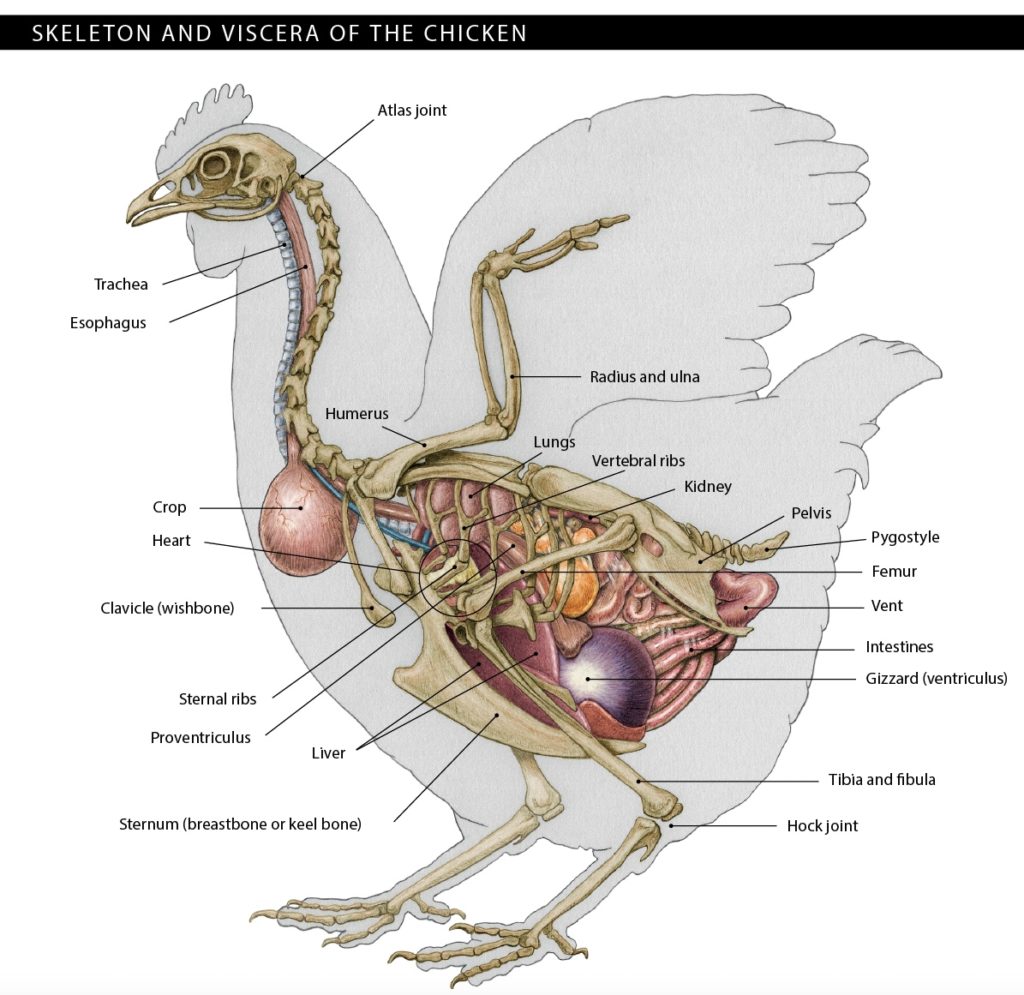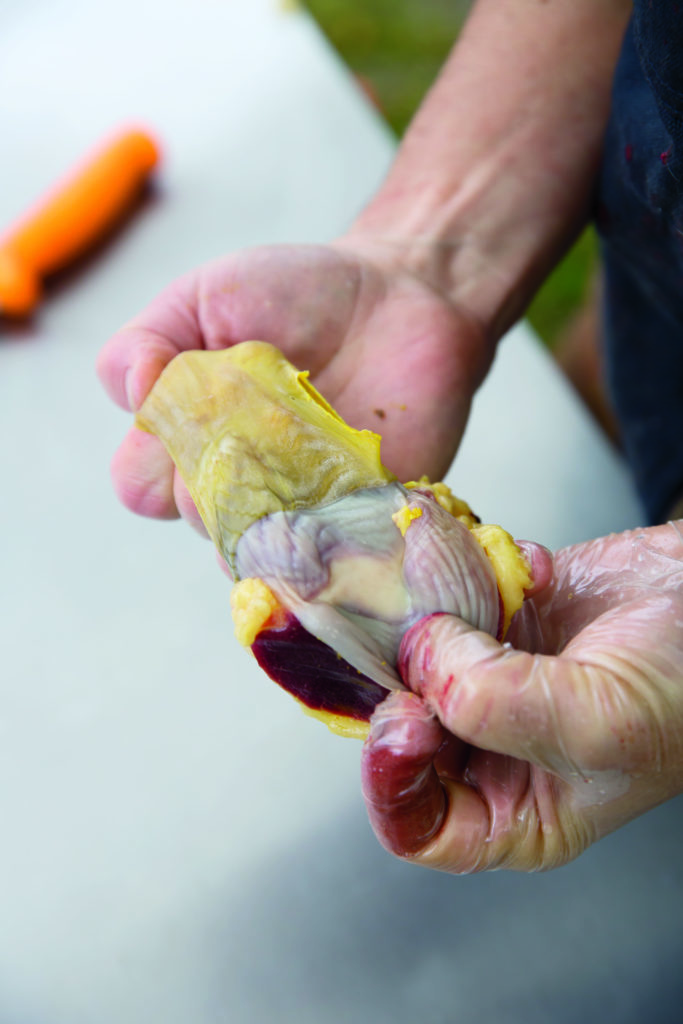Knowing the anatomy of poultry can help you butcher more efficiently. Learn about the placement and processing of gizzard, crop, perineal gland and other internal poultry organs.
How to Begin
Before attempting to slaughter or butcher an animal, you must perform enough preliminary research to ensure that the work you do is efficient and humane. A good place to start is with the anatomical facts about the animal you’re going to be working with. The basic anatomy of poultry includes many of the same working parts that any other animal’s system does, though there are a number of unique components that are important to be familiar with. Visceral anatomy for poultry is covered on the following page. It’s important to understand the basic anatomy so that you know what makes for the most humane slaughter, what is edible, what to discard, and what may cause contamination.
The skeletal structure of a chicken is representative of most avian animals you’ll be working with. And, since it’s the most common bird in the meat world, we’ll be using it as the primary example for describing efficient methods of slaughtering and processing. Later in this chapter we’ll cover some of the differences for other birds such as turkeys, ducks, and geese.
As we cover processing later in this chapter with step-by-step instructions, you may find it helpful to use the following diagram as a reference while familiarizing yourself with specific parts of the skeleton.
Setting Up for Slaughter
Your plan for slaughter should be laid out well in advance. Some equipment for the job is required, and several optional tools and machines can aid in the process. The more birds you decide to process, the more advantages you’ll gain through the use of specialized equipment, but the basic premise of slaughtering poultry is the same no matter what your volume is. You can effectively slaughter poultry on your own, but many would say that it’s best experienced as a group activity, allowing for the separation of processes into specialized stations that help with efficiency and flow.
Choose a workspace for slaughtering that will have plenty of room for all the equipment and stages. Within that space, it’s helpful to have one distinct area reserved for the killing and plucking process (the dirty part) and another defined area for the evisceration, cleaning, and cooling (the clean part). Keeping space between these two phases of slaughter will help you maintain sanitary conditions. Potable water is required throughout any slaughtering process, so make sure easy access is available when considering your setup. All plastics, ideally including even your evisceration water hoses, should be food-grade.
Anatomy

The atlas joint connects the base of the skull to the first cervical vertebra (C1). It is this connection that is disjointed in order to remove the head, either during cervical dislocation or butchering.
The esophagus and trachea leave the skull and run together until they enter the thoracic chamber. The blood vessels that need to be severed run on both sides of these tubes. To avoid severing the trachea and esophagus, one must sever the vessels with an angled cut, like a V.
The crop can be challenging to locate when empty. Follow the esophagus toward the body cavity, and you are sure to find this fleshy sack when needing to separate it from the neck skin.
The perineal gland, which is most often removed, sits atop the caudal vertebrae, at the rear just before the pygostyle, or pope’s nose. Cut wide and shallow to remove this gland, erring on the side of more removal rather than leaving remnants.
The lowest joint of the leg, just below the drumstick, needs to be disjointed to remove the feet. With a bit of pressure on the joint, this is a simple task. Save the feet for stock.
Heart, liver, and gizzard are the most common offal saved from poultry for consumption. The liver is best when frozen immediately after slaughter, though all offal benefits from this approach.
Intestines Removed

Cleaning the Gizzard
Separate the Gizzard
The gizzard shouldn’t be difficult to identify, considering that it’ll be the largest and hardest item in the pile. Separate it from the digestive tract, and discard the rest of the tract (assuming that you’ve removed the other edible offal you want to save).
Slice open the gizzard
This will expose the potentially surprising array of items your bird considered food.

Peel off the lining
Rinse out the gizzard and then take hold of the dark yellow coarse lining (made from a material called koilin) and peel it away, discarding it afterward. Grabbing an edge of the lining may prove difficult. If so, try gripping it between the edge of your knife and your thumb or grab a towel and use that to help with holding. Give it one final rinse and then store the gizzard for later use.

Excerpted from Butchering Poultry, Rabbit, Lamb, Goat, and Pork© 2014 by Adam A. Danforth. Used with permission from Storey Publishing.













1 Comment
That pretty green thing right in the middle of the picture of the entrails is the gall bladder! It’s well fastened to the liver. DON’T cut it, so be extra careful removing it. The bile it contains is the worst tasting liquid on earth!!! Plus, it’s hard to wash off of anything.